He presents a domestic societal explanation of the passage of the Smoot-Hawley tariff act of 1930. Eichengreen argues that economic interest groups were the key actor.
Eichengreen asserts that certain sectors of agriculture and industry supported each others desire for protection and together pressured the government to pass the highly restrictive Smoot-Hawley tariffs.
Eichengreen believes emphasizes that economic history view the great depression and the Smoot-Hawley tariff as inextricably bound up with one another. They assign a central role to the depression in explaining the passage of the 1930 tariff act and at the same time emphasizes the role of the tariff in the singular depth and long duration of the slump.
Eichengreen argues that economic interest groups were the key actors underlying the passage of the act. he believes that it is not hard to identity relationship linking the tariff to the depression and vice versa. the evidence examined here suggests that previous accounts have conveyed what is at best an incomplete and at worst a misleading impression of the mechanism at work.
Here we can concentrate on the role of agriculture.border agriculture and small-scale industry engaged in the production of especially goods .that coalition was able to obtain with its member substantial increases in levels of tariff protection because of an unusual conjuncture of distinct if related developments including reforms of congressional procedure, the rise of trade association and the growth of interventionist sentiment.
Finally, the experience of Smoot-Hawley documents how macroeconomic distress accompanied by import penetration gives rise to protectionist pressure but does so only once the analyses transcend the model of monolithic agricultural and industrial blocs.
Are Your Wages Set In Beijing?
Richard Freeman tries to clear the main problems of collective actions in the international economy.
He focuses on the "Wages" as an important factor in international economy. Freeman surveys a growing literature on the effect of trade on wages and employment. Freeman tells us that there are good economic reasons for expecting trade to lead the Immigration of low-skilled workers in developed or capital-abundant states.
The consensus opinion is that trade may have contributed to the fall in real wage for real-skilled for low-skilled workers.
Reading the essay of Freeman, we can find out why in developed countries labor is moving into the protectionist camp.
Maybe your wages were not set in Beijing in yesterday and today but they will be on tomorrow.
Freeman emphasizes that in the past, other factors have been more important than trade in the well-being of the less skilled.here are some symbols that we can refer to them: technological changes that occur independent of trade, unexpected political development, welfare states, and related social policies.
Freeman mentions that he has a problem with prognostication .he believes that economists do not have a good record as soothsayers and neither trade nor labor economists are exceptions.
Here FREEDMAN challenges the Alt&Gilligan theorem directly.
They emphasize that the fundamental problem that international trade poses for states is this. trades offer cheaper goods, with more choice with consumers and the greatest economic output for society as a whole. but at the same time, it is also very disruptive to individual s lives, who tying their incomes to the vagarious of international market.
Finally, Freedman is not convicted that continued expansion of trade with less-developed countries spells doom for low-skill westerns.
International trade and domestic coalition
Peter Alexis Gourevitch in his mentioned the relation between agriculture and industry .he tries to assert this relation within international trade between 1873-1896. he examines the impact of upon the trade policies and political coalitions of four countries(France, Germany, United States, and Britain)of the great depression of 1873-1896, during which Germany and France adopted high tariffs on both agricultural and industrial products,Great Britain maintained its policy of free trade.it was Britains historical approach. In the other hand, the United States concentrated on industry and protected industry but not agriculture.
Here are four main factors to compare different approaches of four countries: political system explanation, focusing on domestic statist variables, international system explanation, and domestic social interests.
Maybe the main point of this essay that Gourevitch underlined is the case-study of United States.he mentioned the challenges between Democrats and Republicans in us. There were two different economic approaches.
Two coalitions faced each other. Each contained a variety of groups. compared to the losers, the winners comprised:
1- Groups for which the benefits of their policy goal were intense and urgent, rather than diffuse.
2-Groups occupying strategic positions in the economy.
3-Groups with structurally superior positions in each political system.
This is a historical and political challenge in the US that we can find it today also.the uniformity of the winner's economic characteristics, regardless of regime types, suggests that to the extent that the political advantages derive from economic advantages into policy does require action.
Finally, we uphold that Gurevich not only gives a detailed and informative history of the trade policies of the four great economic power of the late 19th century, he also provides a useful test of several of the main approaches in international political economy.
State power and the structure of International trade
Stephene Krasner makes a partition to explain relationship between state power and the structure of international trade.
He tells us about four principal goals of state action: political power, aggregate national income, economic growth, and social stability.
Krasner combines these 4 factors with national abilities.
In the second step writer analyses some main factors like "Tariff levels", "Trade proportion" and "Regional trading patterns" during 1820-1976.
The main point of this essay is underlining of superpower roles in international political economy.
Here we can realize writers realistic approach so easily. He mentions that international trades should be managed by states as the main players of the international relation.
Krasner underlines a superpower's role frequently .super powers can scavenge the harmony of international political-economic system.
The hegemony of powers is necessary for the creation and continuance of free trade. here we need to kind of great political and economic power.Already simple states have not that. therefor superpowers do that.
Finally, it is necessary for us to consider the time that this essay is written. Krasner did his article in 1976. when us and soviet union recognized as two main powers in the international system, but we can not deny the role of superpowers in this time too.
Factor Specificity, Collective action problems, and Domestic Political institutions
Alt and Gillian in their article explain under what circumstances political coalitions will take the form broad classes, as predicted by Rogowsky, and under what circumstances they will organize along the lines of specific industries.
They emphasize that the fundamental problem that international trade poses for states is this.trades offers cheaper goods, with more choice with consumers and the greatest economic output for society as a whole. but at the same time, it is also very disruptive to individual s lives, who tying their incomes to the vagarious of the international market.
Than authors examine how collective action costs and domestic political institutions influence the formation of political coalitions, and they conclude that these constraints may exert a more important effect than strictly economic consideration.
Recent studies have stressed economic factors such as important.these effects are interactive in authors opinion. the effects of some of these variables depending on the level of others. The Stopler-Samuelson model really requires that collective action costs below for Rogowski s broad trade policy coalition to emerge: If there are collective action problems and factors are perfectly mobile, trade policy coalitions will not form along alas lines and in fact may not form at all, due to familiar collective action problems.
Here authors compare Stolper –Samuelson theorem with Ricardo s model. the Stolper –Samuelson theorem is more consistent with a none-majoritarian or interest group politics model.
But Rogowsky fines a direct relation between politics and economy.He wants to tell us how Trades affects domestic political alignments. According to the Stopler-Samuelson theorem free trade benefits locally abundant factors and productions. The Stolper–Samuelson theorem is a basic theorem in IPE. this theorem describes a relation between the relative prices of output goods and relative factor rewards.
Those theorem concentrates on two main factors: Real Wages and Real return to capital.
The theorem states that under some economic assumptions like constant returns, perfect competition, a rise in the relative price of a good will lead to a rise in the return to that factor used most intensively in the production of the good, and conversely, to a fall in the return to the other factor. this theorem is the base of Ronald- s opinion.
He extends this theorem to reason that increasing exposure to trade-say because of falling transportation costs-will increase the political power of locally abundant.
He tells it is essential to recall what he is not claiming to do! he refers to political and historical and even religious factors .he examples French Revolution in the end of his essay.
Although not seeking to explain trade policy outcomes, Rogowsky provides a powerful explanation of the political coalitions and the politics surrounding trade policy.
Rogowsky shows how international economic forces can exert a profound effect on domestic policies.
Finally, he is presenting here a theoretical puzzle, a kind of social-scientific "thought experiment".
A teasing of unexpected, implications of theories already widely accepted.in fact, Rogowsky s main attempt is extending a Stopler-Samuelson theorem and he does it so completely.
Explaining Business Support for Regional Trade Agreement
Ronald Cox tries to tell us more about Regional Trade Agreements.as we know and here every day via political and economic news, one of the important developments in the international trading system has been the recent proliferation of regional trade agreements(RTA).
NAFTA is the best case study of RTA, also we heard enough about the Caribbean Basin Initiative (CBI).
Cox, in his article, suggests that domestic societal explanation for the growth of these arrangements and argues that business interests are divided into two communities, both of which support an agreement, but for different reasons.
Cox in his article concentrates on NAFTA.in we focus on his analyze about NAFTA we can find the main point of his essay.
He emphasizes that NAFTA is a product of the regional nature of the agreement, which attracts different multinationals for different reasons.
Multinationals analyze NAFTA as an important step for reinvigorating GATT, regionalists view it as additional leverage against foreign competition. What is equally interesting is that, even with such a high degree of unity in the corporate community over NAFTA, the agreement is politically divisive, with nationalists begin led by the unlikely bedfellows of organized labor and Ross Perot in opposing the accord.
Multilateralists prefer the comprehensive trade negotiations of the world trade organization. In other hands, Regionalists prefer more limited RTA s because they give firms preferential access to both low-wage export platforms and rich country markets, and thus important advantages relatives to their foreign competitors.
By Saeed Sobhani
MNA/TT

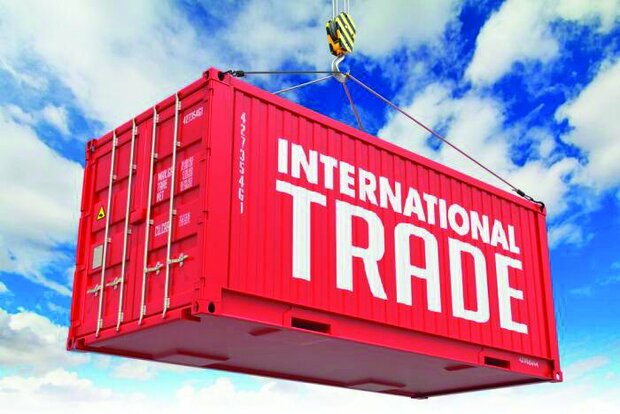
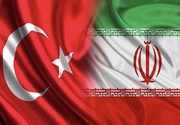

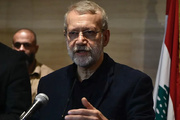
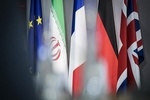


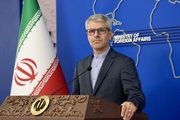


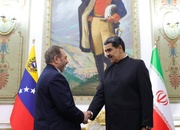



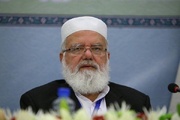
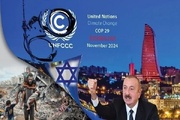

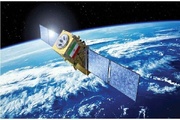

Your Comment